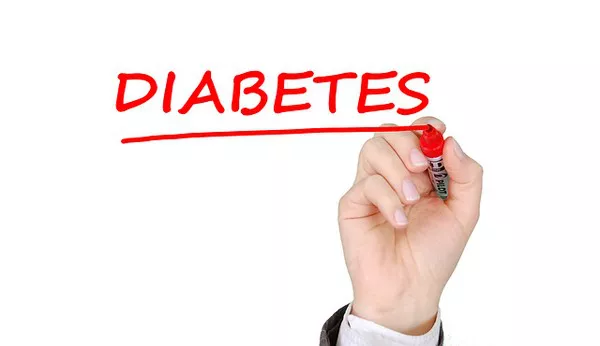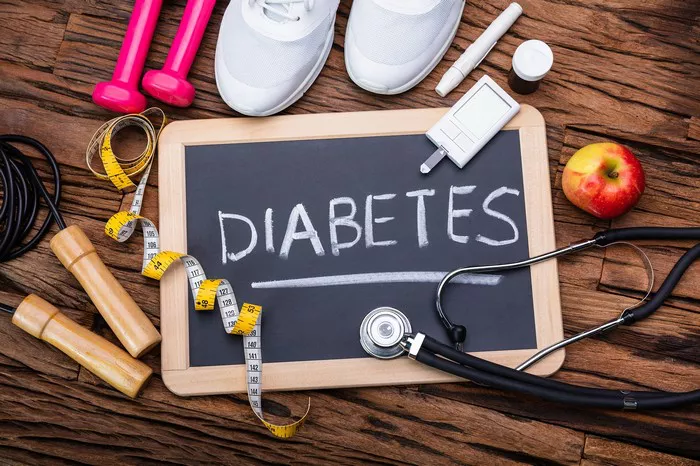Type 2 diabetes mellitus (DM II) is a chronic metabolic disorder characterized by insulin resistance and relative insulin deficiency, leading to hyperglycemia. Proper diagnosis is crucial for timely intervention, management, and prevention of complications. This article delves into the intricacies of diagnosing DM II, exploring the criteria, diagnostic tests, risk factors, and implications for patient care.
What is Type 2 Diabetes?
Type 2 diabetes is the most common form of diabetes, accounting for approximately 90-95% of all diabetes cases. It typically develops in adults over the age of 45, although the prevalence in younger populations, including children and adolescents, is increasing. The condition is marked by the body’s ineffective use of insulin, a hormone produced by the pancreas that regulates blood glucose levels.
Pathophysiology of Type 2 Diabetes
In type 2 diabetes, several pathophysiological mechanisms contribute to the disease:
Insulin Resistance: Cells in muscles, fat, and the liver become resistant to insulin, leading to decreased glucose uptake.
Beta-Cell Dysfunction: The pancreatic beta cells fail to produce sufficient insulin in response to elevated blood glucose levels.
Increased Hepatic Glucose Production: The liver releases more glucose into the bloodstream due to inappropriate signaling.
Adipose Tissue Dysfunction: Fat cells release pro-inflammatory cytokines that exacerbate insulin resistance.
Risk Factors for Type 2 Diabetes
Several factors increase the risk of developing type 2 diabetes:
Genetic Predisposition: A family history of diabetes significantly raises the risk.
Age: The risk increases with age, particularly after 45.
Obesity: Excess body fat, especially visceral fat, is a major risk factor.
Physical Inactivity: Lack of exercise contributes to insulin resistance.
Diet: Poor dietary habits, including high intake of sugar and refined carbohydrates, increase risk.
Ethnicity: Certain ethnic groups, such as African Americans, Hispanics, Native Americans, and Asian Americans, have higher prevalence rates.
History of Gestational Diabetes: Women who had gestational diabetes during pregnancy are at higher risk.
Polycystic Ovary Syndrome (PCOS): Women with PCOS are more likely to develop type 2 diabetes.
Symptoms of Type 2 Diabetes
The onset of type 2 diabetes is often gradual, and symptoms may be mild or absent in the early stages. Common symptoms include:
- Increased Thirst (Polydipsia)
- Frequent Urination (Polyuria)
- Increased Hunger (Polyphagia)
- Fatigue
- Blurred Vision
- Slow-Healing Sores
- Frequent Infections
- Tingling or Numbness in Hands or Feet
Diagnostic Criteria for Type 2 Diabetes
Diagnosing type 2 diabetes involves several tests and criteria. According to the American Diabetes Association (ADA), the following tests and thresholds are used for diagnosis:
1. Fasting Plasma Glucose (FPG) Test
The FPG test measures blood glucose levels after an overnight fast (at least 8 hours without eating). It is one of the most common tests used for diagnosing diabetes.
Normal: Less than 100 mg/dL (5.6 mmol/L)
Prediabetes: 100 to 125 mg/dL (5.6 to 6.9 mmol/L)
Diabetes: 126 mg/dL (7.0 mmol/L) or higher on two separate occasions
2. Hemoglobin A1c (HbA1c) Test
The HbA1c test measures the average blood glucose levels over the past 2 to 3 months. It reflects the percentage of hemoglobin proteins in the blood that are glycated (attached to glucose).
Normal: Below 5.7%
Prediabetes: 5.7% to 6.4%
Diabetes: 6.5% or higher on two separate occasions
3. Oral Glucose Tolerance Test (OGTT)
The OGTT measures blood glucose levels before and 2 hours after drinking a glucose-rich beverage. This test is more sensitive than FPG but less commonly used due to its inconvenience.
Normal: Less than 140 mg/dL (7.8 mmol/L) after 2 hours
Prediabetes: 140 to 199 mg/dL (7.8 to 11.0 mmol/L) after 2 hours
Diabetes: 200 mg/dL (11.1 mmol/L) or higher after 2 hours
4. Random Plasma Glucose Test
The random plasma glucose test measures blood glucose levels at any time of day, regardless of when the person last ate. It is often used when diabetes symptoms are present.
Diabetes: 200 mg/dL (11.1 mmol/L) or higher
Confirmatory Testing
A diagnosis of diabetes should be confirmed by repeating the same test on a different day, unless there are clear symptoms of diabetes along with a random plasma glucose of 200 mg/dL or higher.
Importance of Early Diagnosis
Early diagnosis of type 2 diabetes is crucial for preventing or delaying complications such as cardiovascular disease, neuropathy, nephropathy, retinopathy, and lower limb amputations. It also allows for timely lifestyle interventions and pharmacologic treatments to manage blood glucose levels effectively.
Screening for Type 2 Diabetes
Screening for type 2 diabetes is recommended for:
Adults aged 45 and older: Regardless of weight or risk factors.
Adults of any age with a BMI of 25 or higher (23 or higher for Asian Americans): Who have additional risk factors, such as a family history of diabetes, physical inactivity, or a history of cardiovascular disease.
Women with a history of gestational diabetes: Should be screened every three years.
Individuals with prediabetes: Should be tested annually.
Diagnostic Testing for Special Populations
1. Children and Adolescents
Due to the rising incidence of type 2 diabetes in younger populations, screening is recommended for overweight children and adolescents (BMI above the 85th percentile) with two or more additional risk factors, such as a family history of diabetes or signs of insulin resistance.
2. Pregnant Women
Gestational diabetes screening is typically conducted between 24 and 28 weeks of pregnancy using the OGTT. Women with a history of gestational diabetes should undergo lifelong screening every three years.
Diagnostic Challenges and Considerations
Diagnosing type 2 diabetes can be complex due to various factors:
Atypical Presentations: Some individuals may present with atypical symptoms or without classic symptoms, particularly in the early stages.
Laboratory Variability: Different laboratories may have slight variations in test results, emphasizing the importance of confirmatory testing.
Impact of Acute Illness or Stress: Acute illnesses or stress can temporarily elevate blood glucose levels, complicating diagnosis.
Medications: Certain medications, such as corticosteroids, can affect blood glucose levels and complicate diagnosis.
Implications of a Type 2 Diabetes Diagnosis
A diagnosis of type 2 diabetes has significant implications for patient care and management:
1. Lifestyle Modifications
Diet and exercise are cornerstone interventions for managing type 2 diabetes. Patients should receive education on:
Healthy Eating: Emphasizing low glycemic index foods, balanced macronutrients, and portion control.
Physical Activity: Encouraging at least 150 minutes of moderate-intensity exercise per week.
2. Pharmacologic Treatment
Several classes of medications are available to manage blood glucose levels, including:
Metformin: Often the first-line medication due to its efficacy and safety profile.
Sulfonylureas: Stimulate insulin secretion but carry a risk of hypoglycemia.
DPP-4 Inhibitors: Increase insulin secretion and decrease glucagon levels.
GLP-1 Receptor Agonists: Enhance insulin secretion and promote weight loss.
SGLT2 Inhibitors: Increase urinary glucose excretion and have cardiovascular benefits.
Insulin Therapy: Necessary for some patients, particularly those with significant hyperglycemia or beta-cell failure.
3. Monitoring and Follow-Up
Regular monitoring of blood glucose levels, HbA1c, and other metabolic parameters is essential for managing type 2 diabetes. Patients should also be monitored for potential complications, including:
Cardiovascular Disease: Regular assessment of blood pressure, cholesterol levels, and heart health.
Diabetic Retinopathy: Annual eye exams to detect and manage retinal damage.
Diabetic Neuropathy: Regular foot exams and assessments for nerve damage.
Diabetic Nephropathy: Monitoring kidney function through urine tests and blood tests.
4. Patient Education and Support
Comprehensive patient education and support are vital for effective diabetes management. This includes:
Self-Monitoring of Blood Glucose (SMBG): Teaching patients how to check their blood sugar levels at home.
Medication Adherence: Ensuring patients understand their medication regimen and its importance.
Lifestyle Counseling: Providing ongoing support for diet, exercise, and weight management.
Mental Health Support: Addressing the psychological impact of a chronic disease diagnosis.
See also: What is Diabetes and How Does It Affect the Body?
Conclusion
Diagnosing type 2 diabetes involves a thorough understanding of the disease’s pathophysiology, risk factors, and diagnostic criteria. Early and accurate diagnosis is essential for initiating appropriate interventions and preventing complications. Through a combination of lifestyle modifications, pharmacologic treatment, and regular monitoring, patients with type 2 diabetes can achieve optimal glycemic control and improve their quality of life. Healthcare providers play a crucial role in educating, supporting, and guiding patients through their diabetes management journey.


























